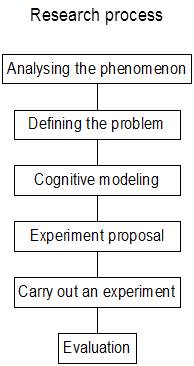Perhaps you have experience with research (science) tasks, but possibly not at all with design (technology) tasks. What are the differences and similarities?
In the following text we will outline the these similarities and differences so that you will become familiar with the characteristic ways of thinking and problem solving approaches in both science and technology.
Research & design projects are very similar. However there is a clear difference in objectives of each type of project. The objective of science is understanding the physical world, while the objective of technology is changing that world. Connected to this we can say that the yield of a research activity is knowledge, while the yield of a design process is a product.
We also define ‘quality’ in different ways. Where the quality of research is judged by the correspondence with the facts, we can say that the quality of the design is judged by the correspondence with the needs of the focus-group or client.
Each project type is also driven by different motivations. Researchers are motivated by (abstract) thinking, curiosity and the wish to gain a fundamental understanding of the physical world. Designers are motivated by doing, by the pleasure of creating things, and the wish to elaborate practical solutions for real (human) problems.
Looking at the schematic comparing the research and design processes, it may appear that both are very similar. At first glance, the problem solving processes in both domains are the same but then there are important differences, especially in the first three stages of the problem solving process (which is in many cases cyclic and not linear as might be suggested by the diagrams!).
|
|
|
Schematic to compare the research and design process
Analysing the problem
- A research problem starts with an orientation on a phenomenon: a mismatch between the theory and the observed facts.
- Design problem starts with an orientation on people: a mismatch between the real world and the needs of a focus group or client.
- Design problems are ill defined, while research problems are not. Goal criteria are not only ill defined but sometimes even contradictory (Middleton, 2000). As a consequence design problems include much more uncertainties then research problems.
- The search for possible solutions starts after the problem is defined.
- In research we formulate hypotheses and use existing (school) theory to construct a theoretical model, which enables us to explain the observed facts. The model is used to predict possible outcomes for experimental verification or falsification.
Defining the problem
Cognitive modelling
In design projects, the search for solutions is more complex. Whereas research projects are dealing with an existing and observable world, design projects often involve creating a previously non-existing thing that is not directly observable to the world. In fact there are many realisable worlds and we don’t know which world will give the best correspondence with the needs. We have to make predictions about the ‘behaviour’ of the products to be designed and we never know if we did miss a better solution. In the search for solutions divergent thinking skills are needed.
In the latter stages, problem solving activities are similar in both domains. In these stages we are concerned with planning, construction and testing ideas. For this kind of activities more vertical thinking skills are needed.

